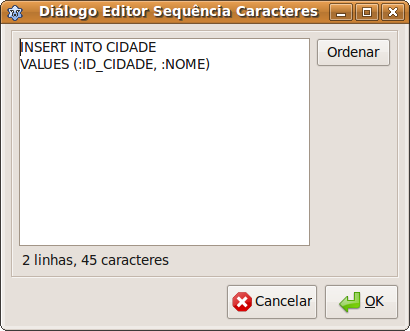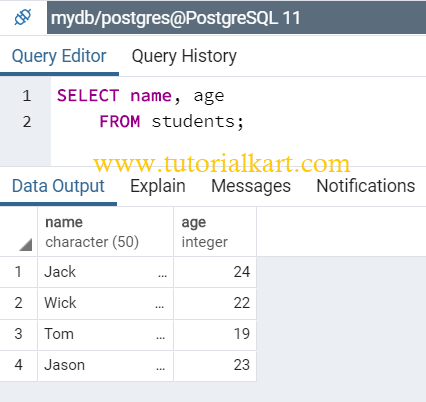A primary key is a column or a group of columns used to identify a row uniquely in a table. You define primary keys through primary key constraints. For example, a GUI application that allows modifying row values probably needs to know the primary key of a table to be able to identify rows uniquely.

A table can have at most one primary key (while it can have many unique and not-null constraints). Relational database theory dictates that every table must have a primary key. So it can be said that the PRIMARY KEY of a table is a combination of NOT NULL and UNIQUE constraint.
A foreign key is a field or group of fields in a table that uniquely identifies a row in another table. In other words, a foreign key is defined in a table that references to the primary key of the other table. Make a Column as PRIMARY KEY. Consider the following table named students. PostgreSQL: Primary Keys.
No column in this table is marked PRIMARY KEY. Now, we will make the column id as PRIMARY KEY. There can be any number of unique and not-null constraints, which are functionally almost the same thing, but only one can be identified as the primary key.
Get instructions on learning how to use the serial data type nd how to use a custom sequence. You should always be using a primary key on your table because postgresql internally uses hash table structures to increase the speed of inserts, deletes, updates and selects. If a primary key column (which is forced unique and non-null) is available, it can be depended on to provide a unique seed for the hash function.

These are similar to AUTO_INCREMENT property supported by some other databases. In order to “know”, to have a relational database your database need to have a “ primary key ”. Before dig in let’s point some very important aspects of an “ primary key ”: — When define a table and specify a primary key , this table will have only primary key and this is mandatory. A foreign key constraint, also known as Referential integrity Constraint, specifies that the values of the foreign key correspond to actual values of the primary key in the other table.
It can be a single column or multiple columns. The PRIMARY KEY constraint uniquely identifies each record in a table. SQL PRIMARY KEY Constraint.
Primary keys must contain UNIQUE values, and cannot contain NULL values. Retrieve primary key columns. Jump to: navigation, search. The add primary key function lists all of the columns of the table and allows the user to choose one or more columns to add to the primary key for the table.
SERIAL data type allows you to automatically generate unique integer numbers ( IDs, identity, auto-increment , sequence) for a column. If I have a primary key constraint defined in the database do I also need to create an index on that field for fast lookup? The documentation on the web seems to imply that the contraint is not an index. If a primary key consists of more than one column, duplicate values are allowed in one column, but each combination of values from all the columns in the primary key must be unique.
Edit table data without primary key. This warning message say, I will not be able to edit or change existing row data since I do not have primary key or OIDs defined on this table. This Oracle tutorial explains how to create, drop, disable, and enable a primary key in Oracle with syntax and examples. So far we’ve quantified some base line performance on the different primary key types, but only for the most basic test cases. What is a primary key in Oracle?
These tests were designed to isolate the effect each type of primary key has, and the are much more pronounced than you’d likely see with a table designed to solve an actual business problem. Query below lists all primary keys constraints (PK) in the database with their columns (one row per column). See also: list of all primary keys (one row per PK). For Table A, a primary key can consist of single or multiple columns. Now that you know what is the primary key , next in this article on Primary Key in SQL, let us understand the rules of the primary key.
I think to get primary key and foreign key should do like this. A PRIMARY KEY can be represented for one column or combination of columns. No NULL value can not be accepted in PRIMARY KEY. You can define one column as PRIMARY KEY by using column-level constraint. In case the primary key contains multiple columns, you must use the table-level constraint.
I know how to make a primary key within a table, but how do I make an existing index a primary key ? The drop primary key function generates the appropriate alter table drop primary key SQL command for dropping the key from the table. Por ejemplo, si intentamos definir la restricción primary key para libros y hay registros con códigos repetidos o con un valor null, la restricción no se establece. Access uses primary key fields to quickly associate data from multiple tables and combine that data in a meaningful way. You can include the primary key fields in other tables to refer back to the table that is the source of the primary key.
In those other tables, the fields are called foreign keys. Normally a primary key would just be a single column.
Keine Kommentare:
Kommentar veröffentlichen
Hinweis: Nur ein Mitglied dieses Blogs kann Kommentare posten.